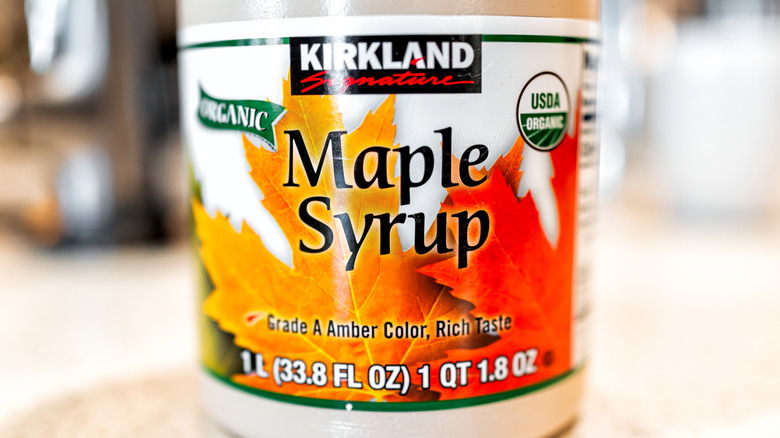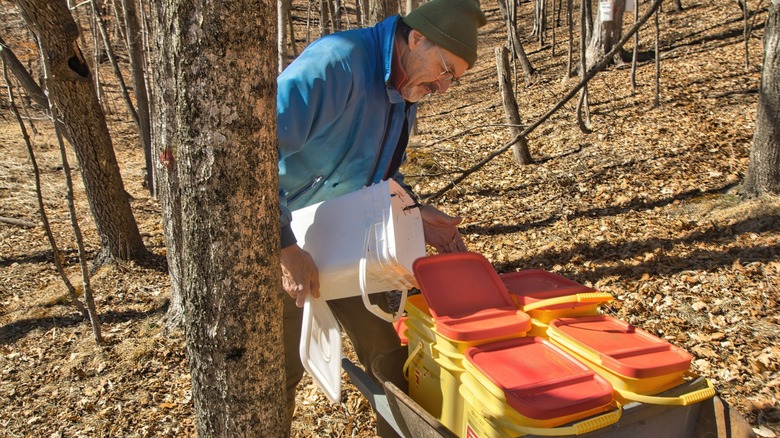Where Does Costco Source Its Kirkland Maple Syrup?
On the lengthy list of the best Costco grocery products to buy, Kirkland Signature Organic Maple Syrup is a must-have. With a generous 33.8-ounce bottle that can smother countless stacks of buttery pancakes and a very reasonable price tag given the product — there's a reason that maple syrup is usually so expensive — putting it in your cart on your next grocery run should be a no-brainer. Most Costco shoppers agree, as evidenced by the fact that, out of over 5,000 ratings on the retailer's website, the maple syrup is currently boasting 4.9 out of 5 stars. Some have claimed that Costco's maple syrup jug lids are flawed, but that's a picky little gripe that can be addressed and may just be attributable to user error.
If you are the type of person to be choosy about your maple syrup, the Kirkland Signature syrup just might live up to your exacting standards. You may be wondering where it comes from, however, given the fact that the provenance of maple syrup can impact its flavor. Your syrup can taste different depending on where the tree was grown, what time of year it was tapped, and how it was filtered and stored. Well, wonder no more: sources report that Costco's maple syrup comes from Canada. More specifically, it is tapped from Quebecois maple trees during the months of March and April.
What does the source of Kirkland maple syrup mean for its taste and quality?
Quebec, where Costco's Kirkland Signature Organic Maple Syrup originates, is a maple syrup powerhouse that produces 90% of Canada's maple syrup and 72% of all worldwide maple syrup. The province has a long and rich history with the product ... in 1676, a French missionary named Chrestien Leclercq returned from his New World travels with an iron cauldron that he had witnessed Native Americans using to make maple sugar. It's been a little less than 450 years, and the maple syrup business in Quebec is booming. In fact, the province is so instrumental to the global maple syrup business that, in 2010, when scientists isolated a unique polyphenol in maple syrup that does not naturally occur elsewhere in nature, they named it Quebecol.
Perhaps unsurprisingly, Canada has strict laws regarding maple syrup. For example, it must be made wholly from maple sap (in America, additives like salt are permissible). There's also a grading system for Canadian maple syrup that breaks down the color and taste of the syrup. Costco's syrup, for instance, is Grade A Amber, which tells you that it is light in color and therefore sweeter, milder, and good for breakfast. Light syrups are generally harvested earlier in the maple sap season, which begins in March. Next time you are enjoying your pancakes with Costco maple syrup, consider the fact that a lot of history went into the making of that jug!

